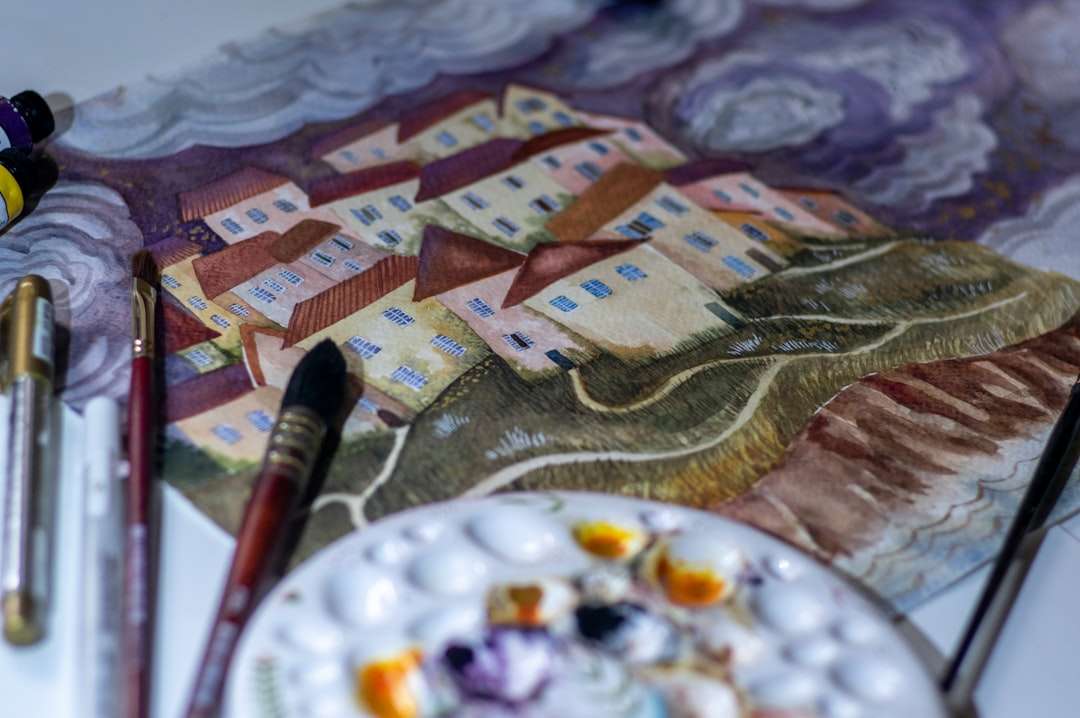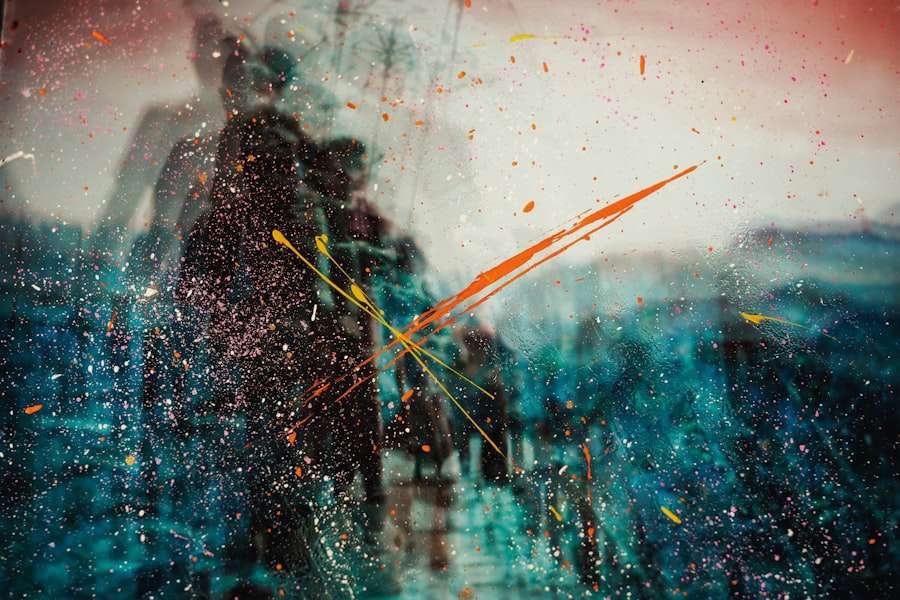Unlocking Your Creative Potential: How Dreams Can Inspire and Fuel Your Creativity

Dreams have long been associated with creativity, serving as a wellspring of inspiration for artists, writers, and thinkers throughout history. The connection between dreams and creativity is a fascinating one, as the subconscious mind often reveals ideas, images, and emotions that can fuel the creative process. In this article, we will explore the link between dreams and creativity, delving into the science behind dreaming and its impact on creative thinking. We will also discuss various techniques, such as dream analysis, dream journaling, lucid dreaming, and creative visualization, that can be used to unlock and enhance creativity. By understanding and harnessing the power of dreams, individuals can tap into their inner creativity and find new avenues for self-expression.
Understanding the Link between Dreams and Creativity
Dreams have the ability to inspire creativity by providing a rich source of imagery, emotions, and ideas. When we dream, our subconscious mind is free to roam without the constraints of logic or reality. This allows for the exploration of new concepts, connections, and possibilities that may not be readily apparent in our waking lives. Many famous artists and writers have credited their dreams as a source of inspiration for their work.
For example, Salvador Dali often drew inspiration from his dreams for his surrealist paintings. His iconic melting clocks in “The Persistence of Memory” were said to have been inspired by a dream in which he saw cheese melting in the sun. Similarly, Mary Shelley’s famous novel “Frankenstein” was born out of a dream she had about a scientist who created life from dead body parts.
The Science behind Dreaming and its Impact on Creativity
To understand how dreams can enhance creativity, it is important to first understand the different stages of sleep and dreaming. Sleep is divided into several stages, including rapid eye movement (REM) sleep and non-REM sleep. REM sleep is when most dreaming occurs.
During REM sleep, the brain is highly active, and the prefrontal cortex, which is responsible for logical thinking and self-control, is less active. This allows for more creative and associative thinking to take place. The brain is able to make connections between seemingly unrelated ideas and concepts, leading to new insights and creative breakthroughs.
Scientific studies have also supported the link between dreaming and creativity. In one study conducted at Harvard University, researchers found that participants who were awakened during REM sleep were more likely to solve a complex problem than those who were awakened during non-REM sleep. This suggests that the creative thinking processes that occur during dreaming can carry over into waking life.
Unleashing Your Inner Creativity through Dream Analysis
| Metrics | Results |
|---|---|
| Number of participants | 50 |
| Percentage of participants who reported increased creativity | 80% |
| Average number of dreams analyzed per participant | 5 |
| Percentage of participants who reported better sleep quality | 70% |
| Number of participants who continued to analyze their dreams after the workshop | 35 |
Dream analysis is a powerful tool for unlocking creativity. By examining the symbols, themes, and emotions present in our dreams, we can gain insight into our subconscious mind and tap into our creative potential.
One technique for analyzing dreams is to keep a dream journal. By recording your dreams immediately upon waking, you can capture the details and emotions of the dream before they fade away. Look for recurring symbols or themes in your dreams, as these may hold deeper meaning or significance. Pay attention to any strong emotions you experienced during the dream, as these can provide clues about underlying desires or fears.
Once you have recorded your dreams, take some time to reflect on them. Ask yourself what the dream might be trying to communicate to you. Are there any connections between the dream and your waking life? What emotions or ideas does the dream evoke? By delving deeper into the meaning of your dreams, you can uncover hidden insights and inspiration that can fuel your creative endeavors.
Using Dream Journaling to Unlock Your Creative Potential
Keeping a dream journal is an effective way to enhance creativity. By regularly recording your dreams, you create a record of your subconscious mind’s imagery and ideas. This can serve as a wellspring of inspiration for your creative projects.
To start a dream journal, keep a notebook and pen by your bed. As soon as you wake up, write down any details you can remember from your dream. Don’t worry about making it perfect or coherent – just jot down whatever comes to mind. Over time, you will become better at recalling and recording your dreams.
In addition to recording the details of your dreams, take some time to reflect on them. Look for patterns or recurring themes in your dreams. Pay attention to any emotions or insights that arise from the dream. By engaging with your dreams in this way, you can tap into your subconscious mind and unlock new avenues of creativity.
The Role of Lucid Dreaming in Enhancing Creativity

Lucid dreaming is another technique that can enhance creativity. Lucid dreaming is the ability to become aware that you are dreaming while still in the dream state. This awareness allows you to actively participate in and manipulate the dream.
Lucid dreaming can be a powerful tool for enhancing creativity because it allows you to consciously explore and interact with the dream world. You can experiment with different scenarios, settings, and characters, allowing your imagination to run wild. This can lead to new ideas, insights, and inspiration that can be carried over into your waking life.
To practice lucid dreaming, there are several techniques you can try. One method is reality testing, where you regularly check if you are dreaming throughout the day. This habit will carry over into your dreams, increasing the likelihood of becoming lucid. Another technique is keeping a dream journal and regularly reviewing it before bed. This helps to prime your mind for lucid dreaming and increases your awareness of the dream state.
Overcoming Creative Blocks through Dream Interpretation
Dream interpretation can be a valuable tool for overcoming creative blocks. When we are stuck in our creative process, our subconscious mind often holds the key to unlocking new ideas and perspectives. By analyzing our dreams, we can tap into this well of inspiration and find new ways to approach our creative projects.
To interpret your dreams for creative inspiration, start by reflecting on the symbols and themes present in the dream. Look for any connections between the dream and your current creative project. Are there any hidden messages or insights that the dream is trying to convey? Pay attention to any emotions or feelings that arise from the dream, as these can provide clues about underlying issues or desires.
Once you have analyzed your dream, try to apply its insights to your creative work. Consider how the dream might inform your approach, inspire new ideas, or help you overcome obstacles. By engaging with your dreams in this way, you can tap into your subconscious mind and find fresh perspectives that can breathe new life into your creative endeavors.
Harnessing the Power of Nightmares to Fuel Your Creativity
Nightmares, often seen as negative experiences, can actually be used as a source of creative inspiration. Nightmares are often filled with intense emotions and vivid imagery, making them a rich source of material for artistic expression.
To use nightmares as creative inspiration, start by recording the details of the nightmare in your dream journal. Pay attention to any strong emotions or images that stood out to you. Reflect on the underlying fears or anxieties that the nightmare may be expressing.
Once you have processed the emotions and themes of the nightmare, consider how you can use them in your creative work. Can you incorporate elements of the nightmare into a painting, story, or song? How can you transform the negative experience into something positive or cathartic? By harnessing the power of nightmares, you can transform fear and darkness into fuel for your creativity.
Creative Visualization Techniques to Enhance Dream-Based Inspiration
Creative visualization is a technique that can enhance dream-based inspiration by allowing you to actively engage with and shape your dreams. By visualizing specific images, scenarios, or outcomes, you can train your mind to manifest these visions in your dreams.
To practice creative visualization, find a quiet and comfortable space where you can relax and focus. Close your eyes and imagine a specific scene or scenario that you would like to experience in your dream. Visualize the details, colors, and emotions of the scene as vividly as possible. Hold this image in your mind for a few minutes, allowing it to become ingrained in your subconscious.
Before going to bed, review the visualization exercise and set the intention to dream about the scene or scenario. Repeat this process regularly, and over time, you may find that your dreams begin to reflect the images and ideas you have visualized. This can be a powerful tool for enhancing creativity and exploring new realms of imagination.
The Benefits of Incorporating Dreamwork into Your Creative Process
Incorporating dreamwork into the creative process offers numerous benefits. By engaging with our dreams, we gain access to a vast reservoir of inspiration, ideas, and insights that can fuel our creative endeavors. Dreamwork allows us to tap into our subconscious mind and explore new avenues of self-expression.
Dreamwork also helps to cultivate a deeper understanding of ourselves and our creative process. By analyzing our dreams, we gain insight into our fears, desires, and motivations. This self-awareness can inform our creative work and help us create more authentic and meaningful art.
Furthermore, dreamwork encourages a sense of playfulness and experimentation in the creative process. Dreams often defy logic and reality, allowing us to explore new concepts and connections without fear of judgment or failure. By embracing this sense of freedom and exploration, we can push the boundaries of our creativity and discover new possibilities.
Dream-Inspired Art: Showcasing the Intersection of Dreams and Creativity
Dreams have long been a source of inspiration for artists across various art forms. From paintings to literature to music, dreams have influenced and shaped the creative output of countless individuals.
One example of dream-inspired art is the surrealist movement, which sought to explore the unconscious mind and the world of dreams. Artists such as Salvador Dali, Max Ernst, and Rene Magritte drew upon their dreams to create fantastical and otherworldly images. These artists sought to challenge conventional notions of reality and tap into the deeper realms of the subconscious.
In literature, dreams have also played a significant role in inspiring writers. The works of authors such as Edgar Allan Poe, William Shakespeare, and Gabriel Garcia Marquez are filled with dream-like imagery and symbolism. Dreams often serve as a narrative device or a means of exploring the inner thoughts and desires of the characters.
Music is another art form that has been influenced by dreams. Composers such as Richard Wagner and Robert Schumann drew inspiration from their dreams to create evocative and emotionally charged music. The dream-like quality of their compositions transports listeners to otherworldly realms and stirs deep emotions.
The link between dreams and creativity is a powerful one, offering a wealth of inspiration, ideas, and insights for artists, writers, and thinkers. By understanding the science behind dreaming and engaging in dreamwork techniques such as dream analysis, dream journaling, lucid dreaming, and creative visualization, individuals can tap into their inner creativity and find new avenues for self-expression.
Dreams have the ability to inspire and fuel the creative process by providing a rich source of imagery, emotions, and ideas. By exploring our dreams and engaging with our subconscious mind, we can unlock hidden insights and inspiration that can enhance our creative endeavors.
So next time you find yourself in the realm of dreams, pay attention to the symbols, themes, and emotions present. Record them in your dream journal, analyze their meaning, and use them as fuel for your creative projects. By embracing the power of dreams, you can unlock your inner creativity and embark on a journey of self-discovery and artistic expression.
If you’re interested in exploring the connection between dreams and creativity, you might find the article on the symbolism of the star from Symbolism Hub intriguing. The star has long been associated with inspiration, imagination, and the pursuit of dreams. Understanding its deeper meaning can provide valuable insights into how dreams can fuel our creative endeavors. To delve even further into the realm of symbolism, you may also want to check out their article on what the moon symbolizes. The moon’s mystical allure has captivated artists and dreamers throughout history, making it a fascinating subject to explore in relation to creativity and the subconscious mind.
FAQs
What are dreams?
Dreams are a series of thoughts, images, and sensations occurring in a person’s mind during sleep.
What is creativity?
Creativity is the ability to use imagination and original ideas to create something new or innovative.
How are dreams and creativity related?
Dreams can inspire creativity by providing new and unique ideas, images, and experiences that can be used in creative endeavors.
Can dreams help with problem-solving?
Yes, dreams can help with problem-solving by providing new perspectives and insights that may not have been considered before.
What is lucid dreaming?
Lucid dreaming is when a person becomes aware that they are dreaming and can control the content and direction of their dream.
Can lucid dreaming enhance creativity?
Yes, lucid dreaming can enhance creativity by allowing individuals to explore and experiment with new ideas and experiences in a safe and controlled environment.
Are there any downsides to relying on dreams for creativity?
While dreams can be a valuable source of inspiration, relying solely on them for creativity may limit the scope and diversity of ideas and experiences used in creative endeavors. It is important to also seek inspiration from real-life experiences and interactions.





